Click on images to enlarge
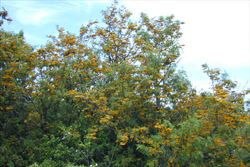
infestation (Photo: Forest and Kim Starr, USGS)
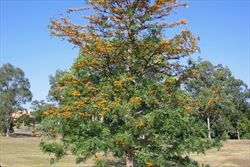
habit (Photo: Sheldon Navie)
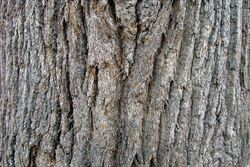
close-up of furrowed bark on main trunk (Photo: Sheldon Navie)
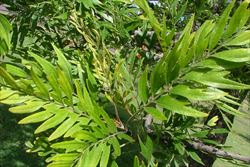
younger leaves (Photo: Sheldon Navie)
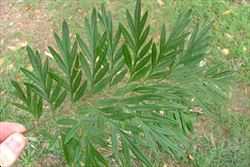
compound leaf with deeply-divided leaflets (Photo: Sheldon Navie)
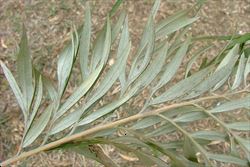
paler leaf underside (Photo: Sheldon Navie)
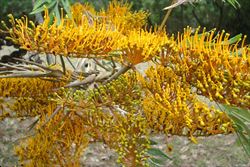
flower clusters (Photo: Sheldon Navie)
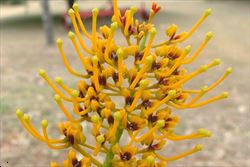
close-up of flowers (Photo: Sheldon Navie)
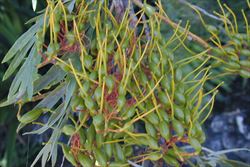
clusters of immature fruit (Photo: Forest and Kim Starr, USGS)
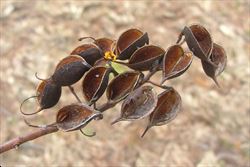
mature fruit that have already released their seeds (Photo: Sheldon Navie)
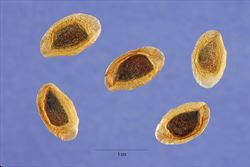
close-up of seeds (Photo: Steve Hurst at USDA PLANTS Database)
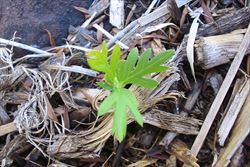
young seedling (Photo: Sheldon Navie)
Scientific Name
Grevillea robusta A. Cunn. ex R. Br.
Family
Proteaceae
Common Names
Australian silky oak, silk oak, silk-oak, silkoak, silky oak, silver oak, southern silky oak
Origin
Native to some parts of eastern Australia (i.e. south-eastern Queensland and north-eastern New South Wales).
Naturalised Distribution
Naturalised beyond its native range on the northern tablelands of New South Wales and sparingly naturalised in northern Victoria. It is also known to be naturalised in the coastal districts of central New South Wales, though this is not backed up by herbarium specimens. Also naturalised on Lord Howe Island and Norfolk Island.
Naturalised overseas in South Africa, New Zealand, Hawaii, French Polynesia, Jamaica and south-eastern USA (i.e. Florida).
Notes
Silky oak (Grevillea robusta) is regarded as an environmental weed in New South Wales and as a minor environmental weed or potential environmental weed in Victoria. This species grows naturally in sub-tropical rainforests and in wet sclerophyll forests on the coast and inland ranges north of the Coffs Harbour district in New South Wales. It is widely cultivated as a garden ornamental and street tree in Australia and has escaped cultivation and become invasive outside its natural range.
Silky oak (Grevillea robusta) is currently of particular concern throughout the wider Sydney and Blue Mountains region in central New South Wales. For example, it is mentioned as a common environmental weed at Hunts Creek in western Sydney and has become naturalised in Lane Cove National Park in northern Sydney. It is also a known weed in the lower Blue Mountains and is one of three native plants that are problem weed species in the Shoalhaven Shire, to the south of Sydney.
In Victoria, silky oak (Grevillea robusta) is also beginning to demonstrate weedy tendencies. It appears on the environmental weed list for the Goulburn Broken Catchment and is listed as a minor environmental weed in the City of Boroondara in Melbourne. Overseas, silky oak (Grevillea robusta) is listed among Hawaii's most invasive horticultural plants, is reported to be invasive in Florida, and is classed as a "Category 3 invader" in South Africa.

